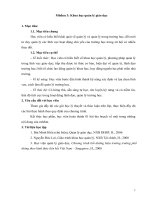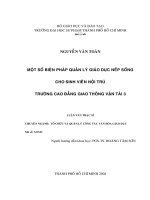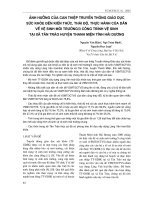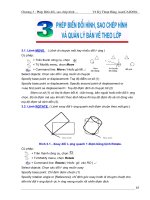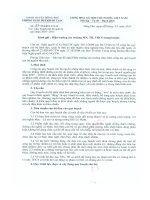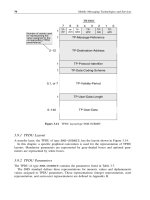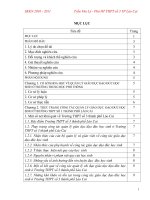- Trang chủ >>
- Mầm non - Tiểu học >>
- Lớp 2
Lecture Web technologies and programming – Lecture 3: Requirement engineering - Modeling web applications - TRƯỜNG CÁN BỘ QUẢN LÝ GIÁO DỤC THÀNH PHỐ HỒ CHÍ MINH
Bạn đang xem bản rút gọn của tài liệu. Xem và tải ngay bản đầy đủ của tài liệu tại đây (208.34 KB, 20 trang )
<span class='text_page_counter'>(1)</span><div class='page_container' data-page=1></div>
<span class='text_page_counter'>(2)</span><div class='page_container' data-page=2></div>
<span class='text_page_counter'>(3)</span><div class='page_container' data-page=3>
3
</div>
<span class='text_page_counter'>(4)</span><div class='page_container' data-page=4>
•
<b>Development Process model</b>
– <b>software development process activities</b>
•
<b>Requirement for a web development </b>
<b>process model</b>
•
<b>Rational unified process model (RUP)</b>
</div>
<span class='text_page_counter'>(5)</span><div class='page_container' data-page=5>
5
•
<b>Project management</b>
•
<b>Responsibilities/tasks of a Project </b>
<b>manager</b>
– <b>Planning</b>
– <b>Risk management</b>
– <b>People management</b>
– <b>Reporting</b>
– <b>Proposal writing</b>
•
<b>Traditional vs. web project </b>
</div>
<span class='text_page_counter'>(6)</span><div class='page_container' data-page=6>
• <b>Introduction to RE</b>
• <b>RE basics</b>
• <b>Requirements specification</b>
• <b>RE process</b>
• <b>RE specifics in web engineering</b>
• <b>System modeling</b>
</div>
<span class='text_page_counter'>(7)</span><div class='page_container' data-page=7>
•
<b>Requirements </b>
<b>Engineering: </b>
<b>the </b>
<b>principles, methods, & tools for </b>
<b>drawing, describing, validating, and </b>
<b>managing project goals and needs</b>
•
<b>Given the complexity of Web apps</b>
<b>, RE </b>
<b>is a critical initial stage activity, but </b>
<b>often poorly executed</b>
</div>
<span class='text_page_counter'>(8)</span><div class='page_container' data-page=8>
<b>It may range from a high-level abstract statement of </b>
<b>a service or of a system constraint to a detailed </b>
<b>mathematical functional specification.</b>
• <b>The processes used for RE vary widely depending </b>
<b>on the application domain, the people involved and </b>
<b>the organisation developing the requirements.</b>
• <b>However, there are a number of generic </b> <b>activities </b>
<b>common to all processes</b>
</div>
<span class='text_page_counter'>(9)</span><div class='page_container' data-page=9>
9
Feasibility
study
Requirements
elicitation and
analysis
Requirements
specification
Requirements
validation
Feasibility
report
System
models
User and system
requirements
</div>
<span class='text_page_counter'>(10)</span><div class='page_container' data-page=10>
•
<b>Costs: </b>
– <b>Inadequate software architectures</b>
– <b>“Unforeseen” problems</b>
• <b>budget overruns</b>
• <b>production delays</b>
• <b>“that’s not what I asked for”</b>
</div>
<span class='text_page_counter'>(11)</span><div class='page_container' data-page=11>
11
•
<b>Why requirement engineering:</b>
– <b>requirements don’t define themselves (Bell </b>
<b>& Thayer, 1976) </b>
– <b>removal of mistakes post hoc is up to 200 </b>
<b>times more costly (Boehm, 1981) </b>
– <b>iterative </b> <b>collection</b> <b> and </b> <b>refinement</b> <b> is the </b>
</div>
<span class='text_page_counter'>(12)</span><div class='page_container' data-page=12>
•
<b>Why requirement engineering:</b>
– <b>A study based on 340 companies in </b>
<b>Austria, more than two thirds consider the </b>
<b>SRS as the major problem in development </b>
<b>process (1995)</b>
– <b>A study on Web applications, 16% systems </b>
<b>fully meet their requirement while 53% </b>
</div>
<span class='text_page_counter'>(13)</span><div class='page_container' data-page=13>
13
•
<b>Why requirement engineering:</b>
– <b>A study among 8000 projects, 30% of </b>
<b>projects fail before completion & almost </b>
<b>half do not meet customer requirements </b>
<b>(Standish group, 1994)</b>
• <b>Unclear objectives, unrealistic </b>
</div>
<span class='text_page_counter'>(14)</span><div class='page_container' data-page=14>
•
<b>Identify</b>
<b> and </b>
<b>involve</b>
<b> the stakeholders</b>
– <b>those that directly influence the </b>
<b>requirements</b>
– <b>customers, users, developers</b>
•
<b>What are their expectations?</b>
– <b>may be misaligned or in conflict</b>
</div>
<span class='text_page_counter'>(15)</span><div class='page_container' data-page=15>
15
•
<b>What is requirement?</b>
•
<b>The descriptions of what the system </b>
<b>should do</b>
– <b>services that it provides and the constraints</b>
<b>on its operation</b>
•
<b>IEEE 601.12 definition of requirement:</b>
– <b>1) Solves a user’s problem</b>
– <b>2) Must be met or possessed by the system </b>
<b>to satisfy a formal agreement</b>
– <b>3) Documented representation of conditions </b>
</div>
<span class='text_page_counter'>(16)</span><div class='page_container' data-page=16>
16
•
<b>Requirements types</b>
•
<b>Functional requirements:</b>
– <b>statement of services</b>
– <b>how system reacts to input</b>
– <b>how system behaves in particular situation</b>
•
<b>Non-functional requirements:</b>
– <b>constraints on services (timing, quality </b>
<b>etc.)</b>
</div>
<span class='text_page_counter'>(17)</span><div class='page_container' data-page=17>
17
•
<b>Requirements are collected </b>
<b>iteratively </b>
<b>and </b>
<b>change</b>
•
<b>Keys</b>
<b> to requirement definition:</b>
– <b>Negotiation</b>
– <b>Scenario-based discovery</b>
</div>
<span class='text_page_counter'>(18)</span><div class='page_container' data-page=18>
18
•
<b>process of </b>
<b>writing</b>
<b> down the user and </b>
<b>system requirements in a </b>
<b>requirements </b>
<b>document</b>
•
<b>User requirements (for users)</b>
– <b>who do not have a technical background.</b>
– <b>should be understand able to users</b>
– <b>avoid notations, use simple tables, forms </b>
<b>etc.</b>
•
<b>System requirements (for Software </b>
<b>engineers)</b>
– <b>starting point for the system design</b>
– <b>how system provides the services</b>
</div>
<span class='text_page_counter'>(19)</span><div class='page_container' data-page=19>
19
•
<b>Natural language specification:</b>
•
<b>Stories</b>
<b> or </b>
<b>itemized</b>
<b> requirements</b>
– <b>create a standard format</b>
– <b>distinguish between mandatory and </b>
<b>desirable requirements</b>
– <b>don’t use the technical words</b>
</div>
<span class='text_page_counter'>(20)</span><div class='page_container' data-page=20>
•
<b>Structured specification:</b>
•
<b>Includes</b>
– <b>description</b>
– <b>inputs/outputs</b>
– <b>description of the action</b>
– <b>pre condition</b>
</div>
<!--links-->
